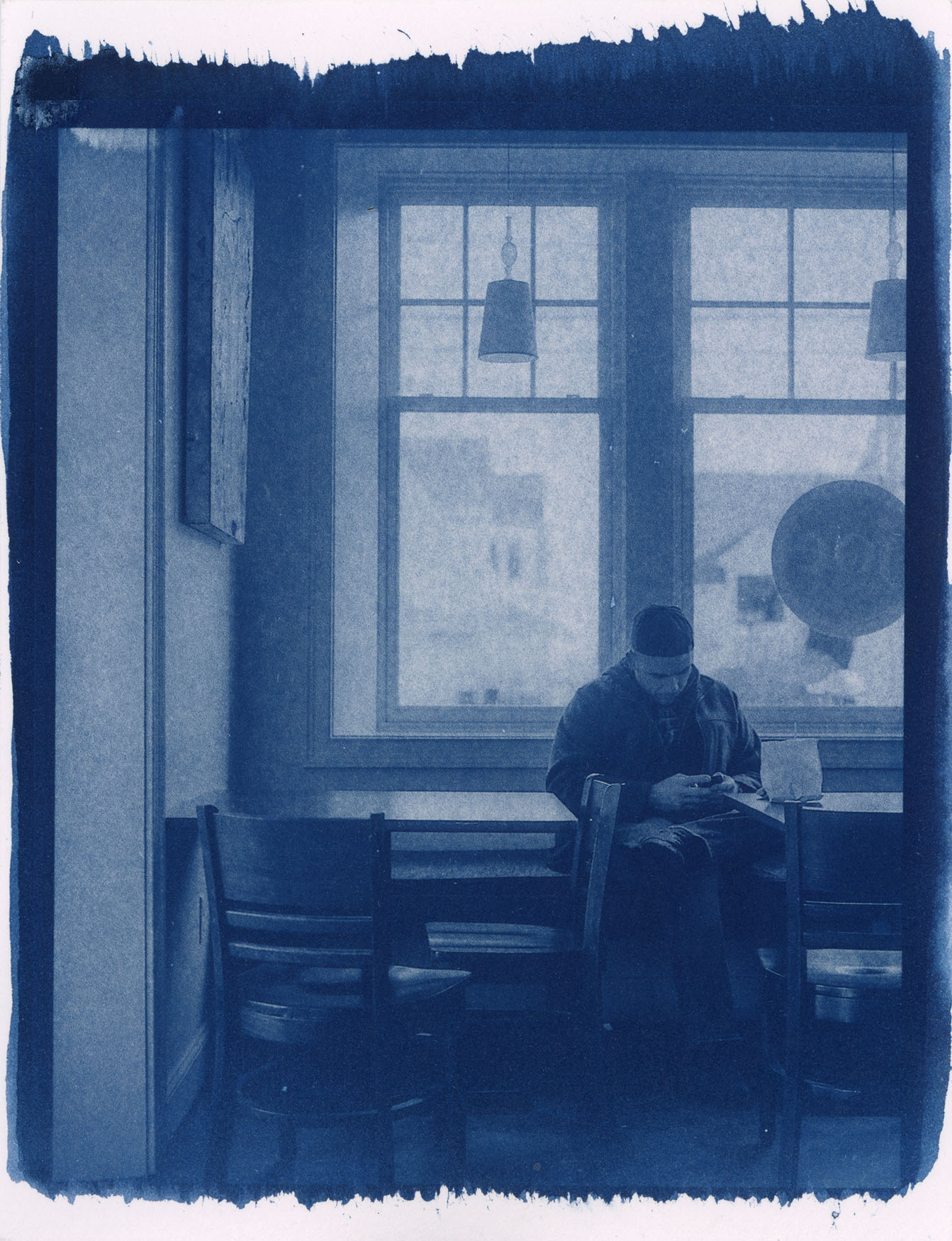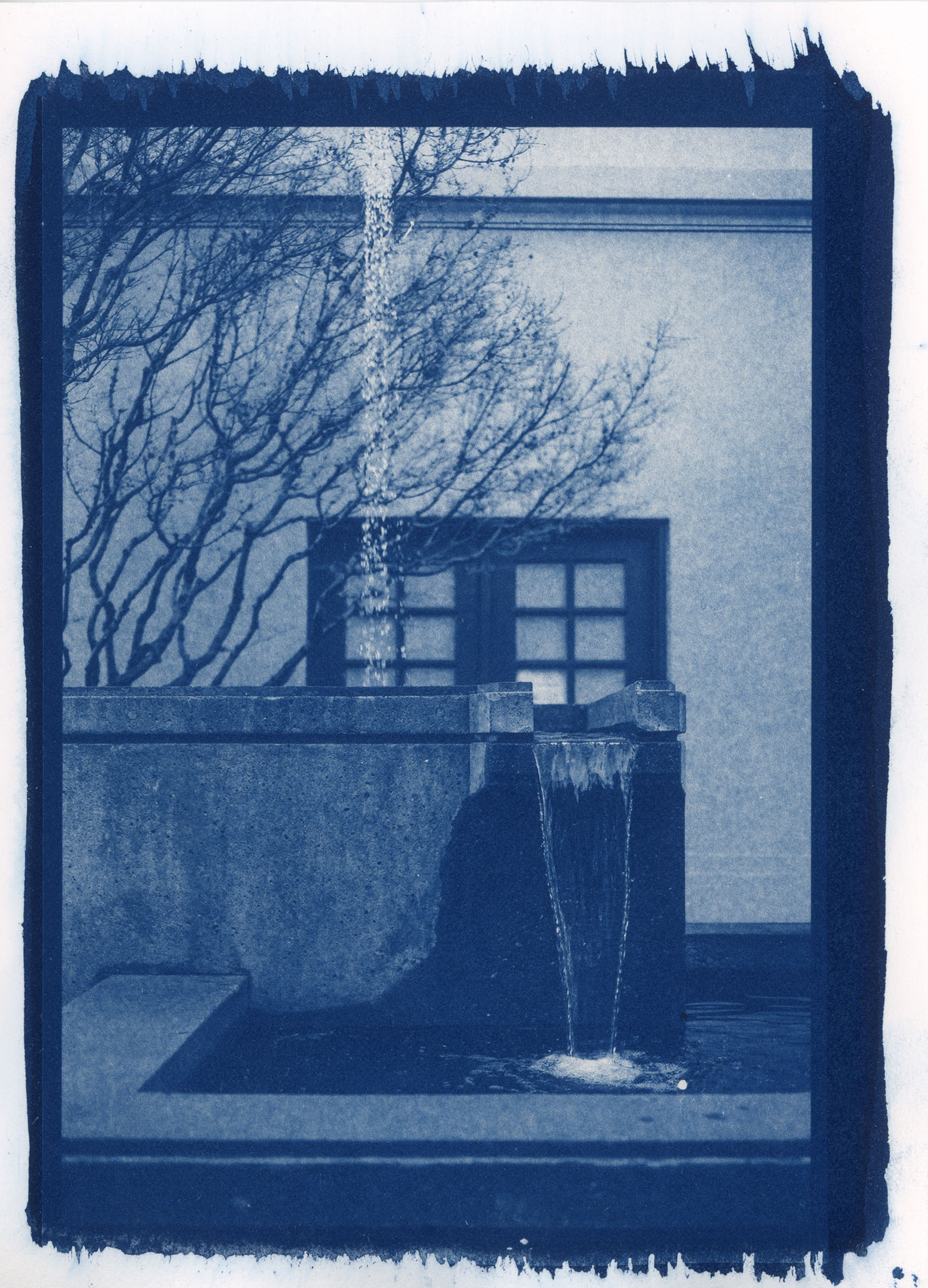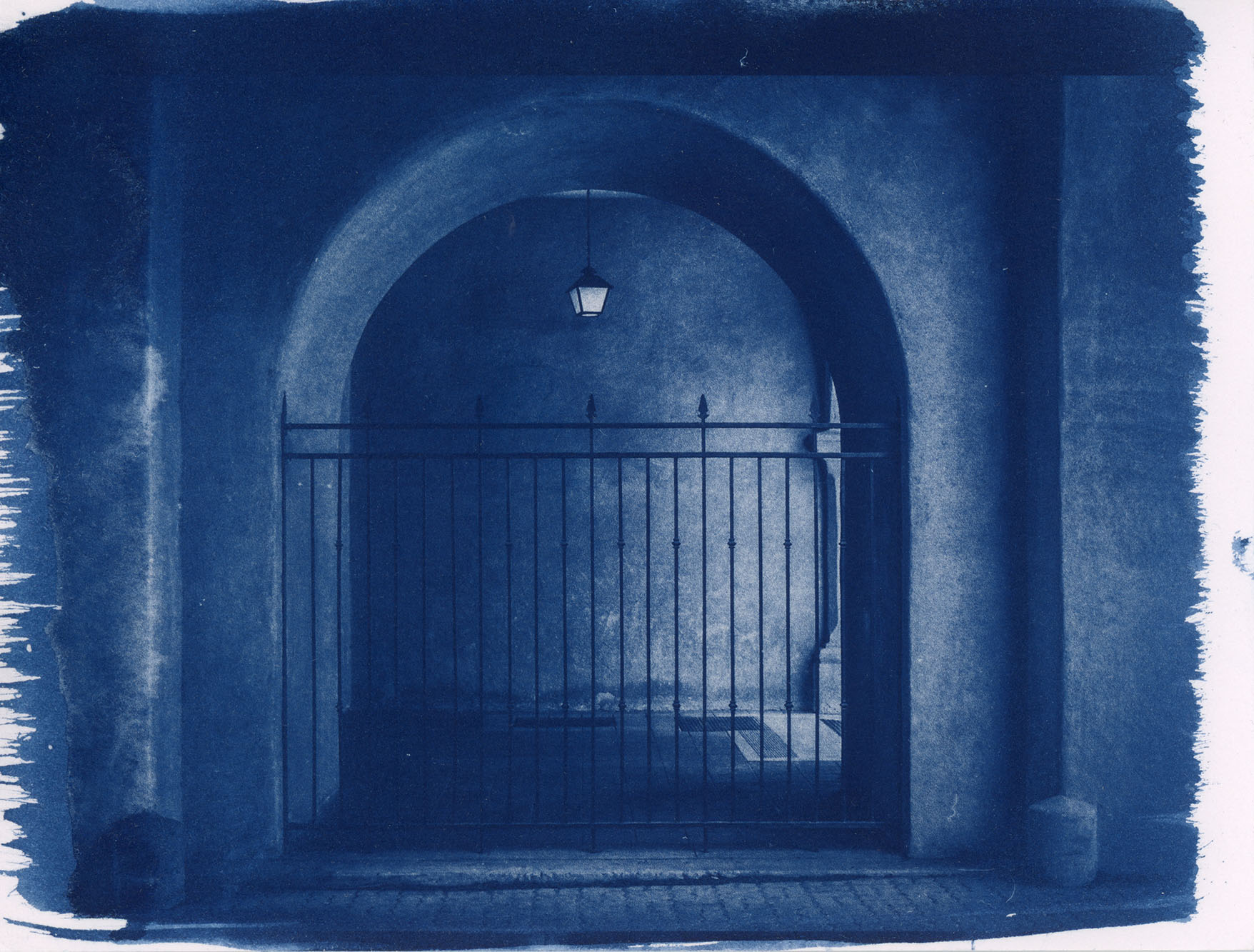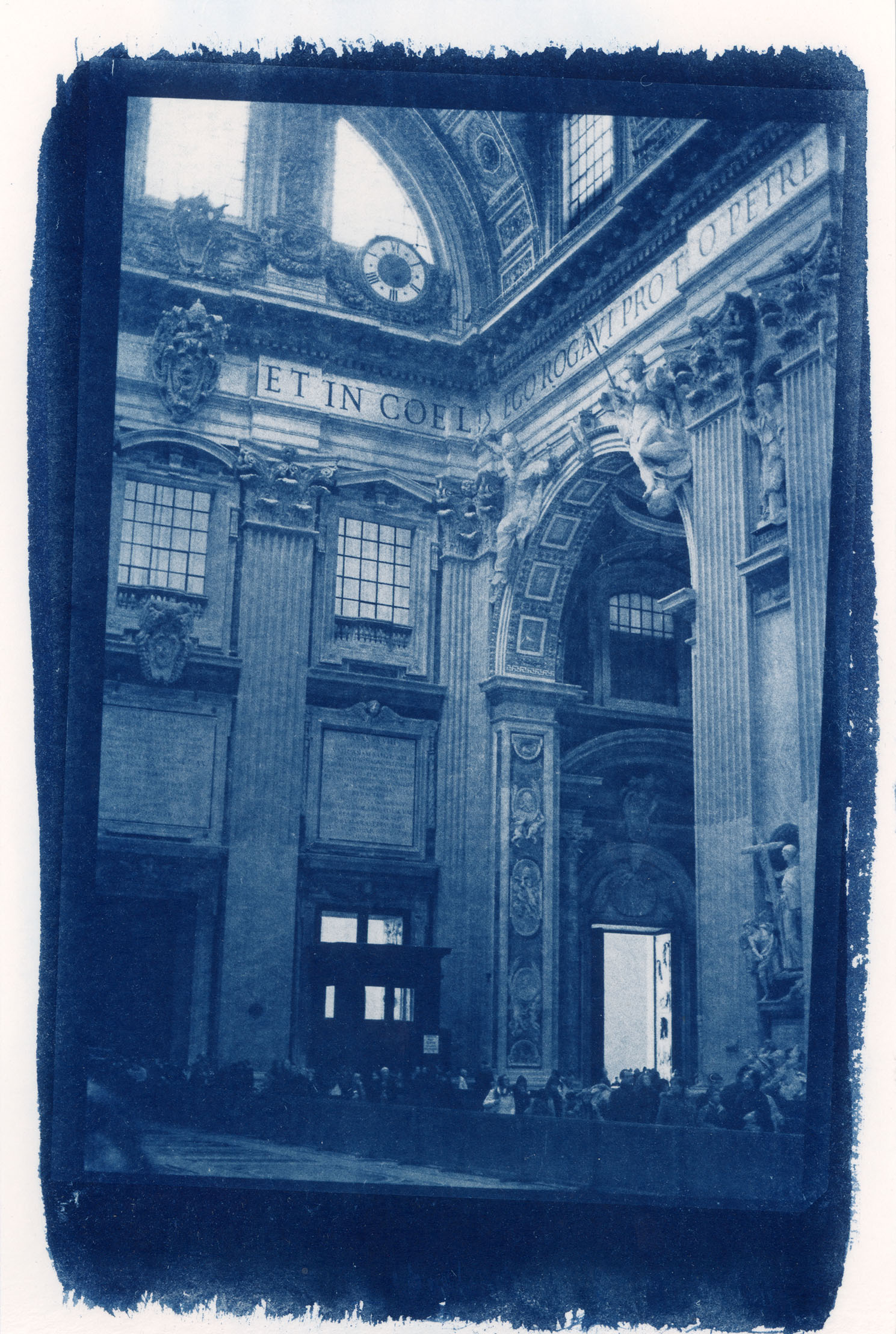Cyanotypes
Ryan Pennington




What are most commonly referred to as "alternative photographic processes" aren't as alternative as they are historic. Invented by Sir John Herschel in the mid-19th C., the cyanotype process was one of the first light-sensitive photo processes and its most prolific use was in making blueprints. The image is formed by the same chemical that makes up the paint pigment Prussian blue.